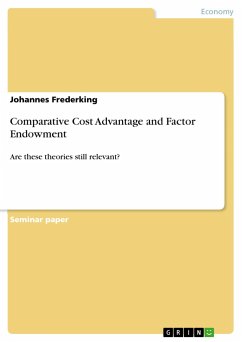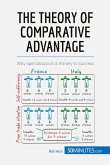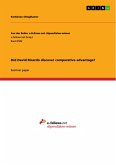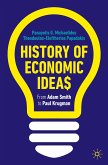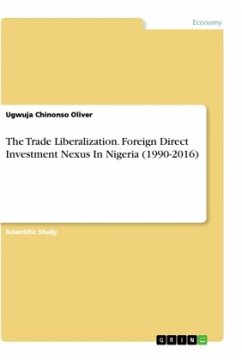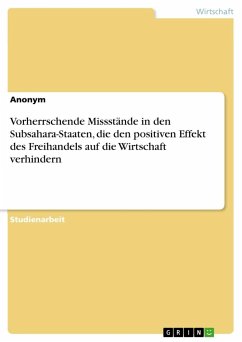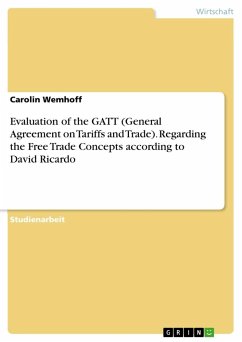Seminar paper from the year 2009 in the subject Economics - International Economic Relations, grade: 1.3, University of Applied Sciences Mainz (School of Business), course: International Business Environment, language: English, abstract: This paper gives an overview of international trade theories. It demonstrates that the fundamentals of classical and neoclassical theories are still relevant today, albeit they have been adjusted and developed. Modern theorists explain international trade with more realistic approaches, such as Krugman et al.'s New Trade Theory or Porter's theory of National Competitive Advantage. The New Trade Theory includes the existence of increasing return of scale to describe and analyze world trade more accurately. Porter's theory of National Competitive Advantage explains international trade as a consequence of productivity differences between nations due to diverse environments and cultures within economies. Dunning and Porter take a globalized world economy into account in order to describe today's trade. The classical theories of Ricardo and Heckscher-Ohlin are limited in describing today's inter-national trade. However, they are still important factors which contribute to the explanation of real-world trade relations. Ricardo's theory describes inter-industry trade which in fact exists between Northern and Southern economies. The relevance of the approach as an explanation of global trade has to be limited due to the fact that inter-industry trade has only a small impact on international trade. De facto, only a small percentage of world trade can be described by North-South trade. The H-O-T describes intra-industry trade between differently endowed countries, which has been exemplified by the trade between Japan and Taiwan. This is true for the case that countries are in different developmental stages combined with different factor endowments. However, when countries' economies stabilize, their factor endowments approximate. Therefore, H-O-T's importance decreases and modern trade theories are required to explain this type of intra-industry trade. Especially since the beginning of globalization in the 1970s, world trade patterns have changed. These changes have only been described briefly because a deeper consideration of this aspect would have exceeded the scope of this paper. For upcoming research it is recommended to concentrate on the changes in the economic geography which globalization has caused. Although some of the modern theories contain post-globalization perspectives, the changing contours of the global economic environment still must be taken more deeply into account in order to analyze today's international trade.
Hinweis: Dieser Artikel kann nur an eine deutsche Lieferadresse ausgeliefert werden.
Hinweis: Dieser Artikel kann nur an eine deutsche Lieferadresse ausgeliefert werden.

